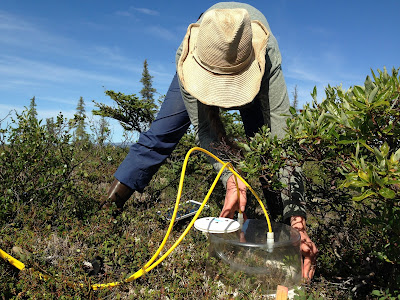The last three weeks have been a great time as more then 25 participants in the NGEE Arctic project conducted research at sites near Nome, AK. Everyone had a well-defined plan before coming to Alaska and executed those plans efficiently and safely. From my perspective this was a win-win situation.
One regret, however is that I did not get to work with the geophysics team from LBNL. This included John, Baptiste, Craig, Florian, and Emmanuel. I have worked with this group before both on the North Slope of Alaska and the Seward Peninsula. And it is a treat to say the least. They are a hard-working, talkative group of researchers who truly love their science and a good challenge.
This week that challenge was several ERT, seismic, EM, and GPR transects that easily totaled more than 5000 meters in length. The datasets that this team collected will be critical as we begin to characterize the subsurface environment of our sites, as well better understand the interactions between permafrost and bedrock and relationships to surface and groundwater hydrology. The hydrology aspects of this are being handled by Brent, Jeff, Cathy, Carli, Lauren, and Bob, colleagues at LANL and UAF. Together this is a strong team.
If you happened to be in Nome the past couple of weeks perhaps you saw their “geophysics” truck…it was easy to tell they were proud of their science!


















